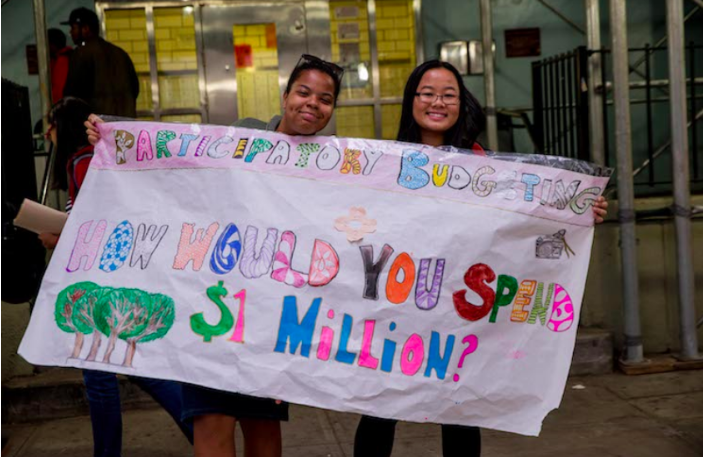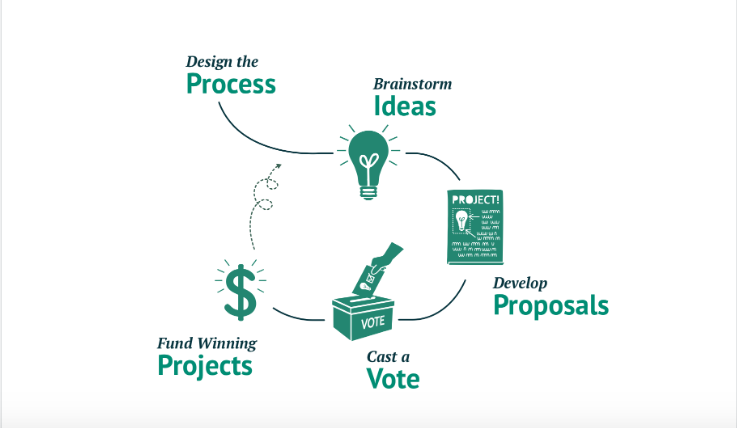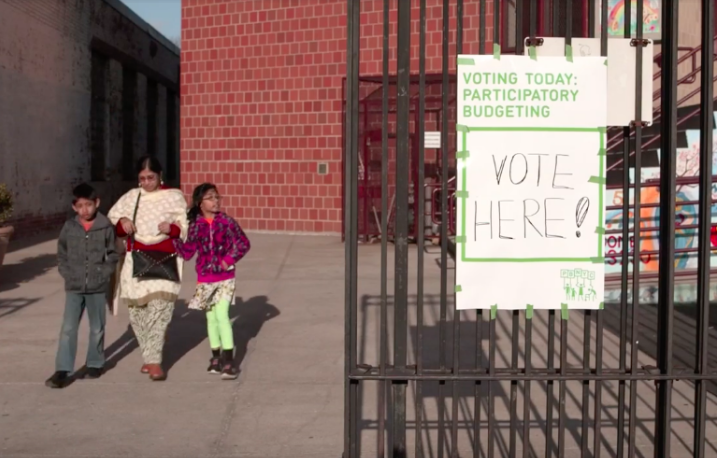
Democracy faces a new age. As technology progresses and the corporations that drive this growth become more powerful, there is a sense of unease that the citizen is losing autonomy of thought and action. Collecting and studying personal data for marketing purposes has become the norm for platforms like Facebook, and the result is a distrust of the disproportionately powerful. To what extent are our thoughts and desires manipulated when we spend so much time ingesting what we see through the lens of our smartphone screens rather than what is around us? Do we have a choice anymore in regards to our privacy when many of these powerful corporations already have so much information? As Amazon prepares to move its headquarters to Long Island City, this uncertainty is becoming more real for New Yorkers. This is why Participatory Budgeting – a grassroots democracy movement that puts decision making power directly into the hands of citizens – is more important than ever.

According to the New York City Council, Participatory Budgeting is “a democratic process in which community members decide directly how to spend a part of a public budget.” The movement was spearheaded by an organization called the Participatory Budgeting Project, which was formed by researchers and policy advocates Josh Lerner, Michael Menser, and Gianpaolo Baiocchi, who came together at the 2005 World Social Forum in Allegre, Brazil. Participatory Budgeting had already taken route and had success there, as a way to address poverty.
Since then, the movement has spread to thousands of cities, including New York City, thanks to partnerships with local organizations like Community Voices Heard. Since Josh Lerner launched a more targeted campaign called PBNYC in 2011, New York has become the largest Participatory Budgeting network in the United States!

Up to this point, PBNYC worked through the participation of individual Council Members, allotting at least $1,000,000 of their budget to community improvement projects. Now in its eighth year in the city, PBNYC has changed from a process in which Council Members could choose to participate, to one that is now a city-wide ballot item. It also is expanding its scope this year, working on expense projects (addressing city agency operations, such as the Department of Sanitation) in addition to capital projects (addressing longer-term investments in infrastructure and public space). This openness on the part of both citizens and leaders to expand the program is a sign of its success – issues that need addressing are concretely being addressed. The very community that will experience policy results can accurately prioritize issues that affect them. Since PBNYC’s inception in 2012, New York communities have funded 706 projects representing $210 million.

Council Member Stephen Levin of District 33 (Greenpoint and Williamsburg) and Antonio Reynoso of District 34 (Greenpoint and Williamsburg) are both participating members. District 33 joined the Participatory Budgeting in Cycle 2 (2012-2013) while District 33 joined in Cycle 4 (2014-2015). Though many noteworthy projects have been completed (such as library and school renovations and transportation improvements), here are the ones that have made our communities greener and more conducive to time spent outdoors.
Participatory-Budgeting-Funded Green Projects in City Council Districts 33 and 34
$100,000 D33: District-wide Tree Planting
$450,000 D33: East River State Park Dog Run
$120,000 D33: PS 34 Playground Restoration & Beautification
$400,000 D33: NYCHA Playground Repairs
$450,000 D33: McGolrick Park Playground Reconstruction
$300,000 D33: Safer Pedestrian Crossings on Meeker Avenue
$500,000 D33: NYCHA Playground/Active Space Renovation
$400,000 D34: Environmental Upgrade to P.S. 19, with new lights, benches and a green wall to absorb pollution from the BQE; a fence to separate the children’s playground, a rain water garden and outdoor classroom facilities.
$500,000 D34: Playground Renovation at Williamsburg Houses
$500,000 D33: Make McGolrick Park Safer
$350,000 D34: Playground Upgrades at Williamsburg Houses
$500,000 D33: Repair Toddler Playground at Independence Towers
$500,000 D34: Modernize our Gym at Hope Gardens Community Center
$ 80,000 D33: 8 New Water Fountains at IS 318 and PS 157
$210,000 D33: Tree planting in Bed-Stuy (up to 60 trees and tree guards)
$300,000 D33: Pedestrian Safety Improvements on a dangerous 3-way intersection next to a playground and residential apartments
$300,000 D33: Pedestrian and Bicycle Connector, to permanently build out the temporary separated bike path to be safer for both pedestrians and vehicles.
$250,000 D34: A Hydroponic Farm at P.S. 274, for students to learn about fresh produce and benefit from what they grow in the classroom.
$500,000 D34: Green Up P.S. 147 Playground, with interactive and innovative equipment to support their STEAM model.
$450,000 D34: Street Tree Planting of 250 trees throughout Ridgewood, Bushwick and Williamsburg
Where does the current Cycle 8 (2018-2019) stand? Budget delegates and facilitators have prepared final proposals for city agency review. Agency staffers are presently reviewing these proposals for capital eligibility. Volunteers will then take that feedback to develop ballot items for the community to vote during the week, March 30th to April 7th, 2019.
If you live in District 33, you can vote if you are at least eleven years old. If you live in District 34, you can vote if you are twelve years old or over.
Stay updated with https://council.nyc.gov/pb/.
Authored by Juliana Peck; edited by Abbey Jasmine Rose and Susan Anderson.


